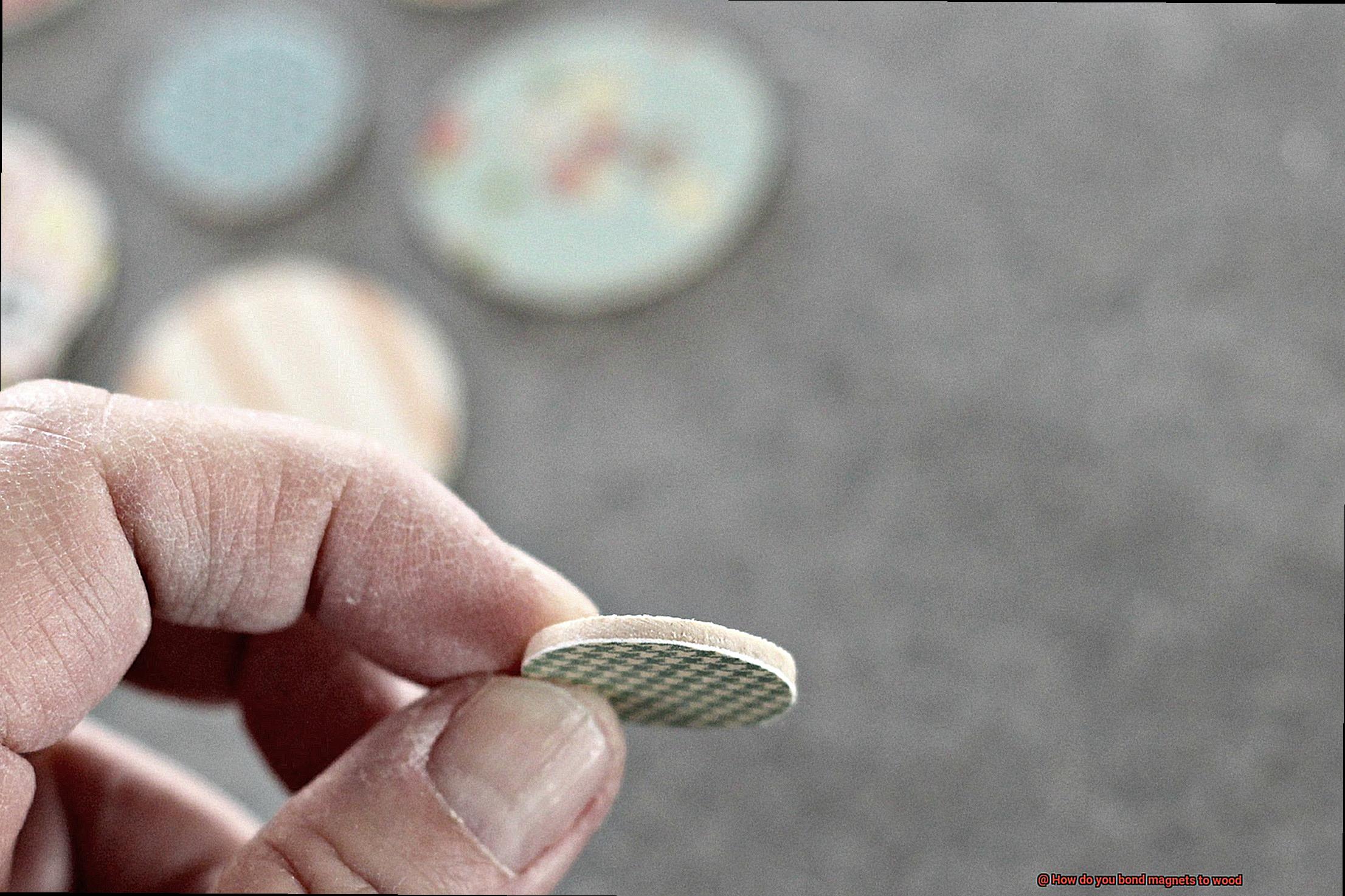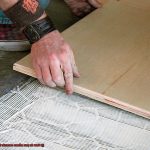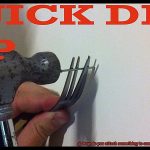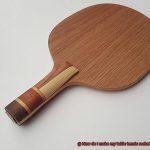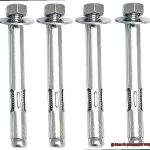Ever wondered about the captivating science behind magnets? How these small yet mighty objects wield an invisible force that attracts and repels? Magnets have fascinated us for centuries, finding their way into everyday applications. But what if we could harness this magnetic power and fuse it with another material, like wood? Imagine the endless possibilities.
In this blog post, we’ll dive into the captivating realm of magnet-wood bonding. From displaying artwork to creating hidden compartments, the bond between magnets and wood opens up a world of creative opportunities. But how do we achieve this seemingly magical connection? Let’s unravel the mystery together.
First things first – understanding why magnets and wood can work together is crucial. Wood isn’t inherently magnetic, but with a little intervention, it can become a perfect canvas for magnetism. Through adhesive bonding, magnets can securely attach to wooden surfaces, transforming them into gripping mechanisms, decorative elements, or even secret closures.
To create a strong bond between magnets and wood, selecting the right adhesive is essential. Epoxy resins, cyanoacrylate adhesives, or specialized wood adhesives can provide durable and long-lasting connections. Knowing the properties and strengths of each adhesive type ensures that your magnets stay in place under stress or regular use.
But wait – there’s more. Surface preparation plays a vital role in achieving optimal bonding results. By sanding the wooden surface, eliminating any debris, and applying a primer or sealant, you create an ideal environment for the adhesive to grip both the magnet and wood more effectively.
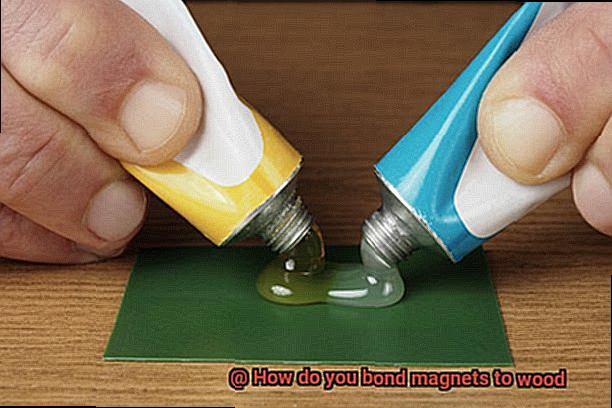
On this fascinating journey into magnet-wood bonding, we’ll explore various techniques, tips, and tricks to guarantee a successful union. Whether you’re an avid DIY enthusiast seeking innovative projects or simply curious about magnet science – understanding this magnetic connection opens up a whole new dimension of possibilities.
So, buckle up and get ready for a magnetic adventure as we uncover the secrets of bonding magnets to wood.
What You Need to Know Before Bonding Magnets to Wood
Contents
- 1 What You Need to Know Before Bonding Magnets to Wood
- 2 Epoxy as an Adhesive for Bonding Magnets to Wood
- 3 Super Glue as an Adhesive for Bonding Magnets to Wood
- 4 Magnet-Specific Adhesives for Bonding Magnets to Wood
- 5 Double-Sided Tape for Bonding Magnets to Wood
- 6 Factors to Consider When Bonding Magnets to Wood
- 7 Additional Ways of Securing a Magnet onto a Wooden Surface
- 8 Conclusion
Embarking on the journey of bonding magnets to wood requires careful consideration and knowledge to achieve a robust and long-lasting bond. In this comprehensive guide, we will delve into the key factors to bear in mind before undertaking this project. From understanding the unique properties of wood and magnets to selecting the perfect adhesive and preparing the surfaces meticulously, we’ve got you covered. So let’s dive into this magnetic adventure.
Unlocking the Mysteries of Materials:
- Wood: With its porous nature and relative softness, wood demands special attention during the bonding process.
- Magnets: Crafted from hard and brittle materials like neodymium or ferrite, magnets’ hardness must be taken into account when selecting an adhesive.
Choosing the Perfect Adhesive:
- Epoxy: Renowned for its exceptional strength and durability, epoxy emerges as a popular choice. Prioritize cleanliness by ensuring both magnet and wood surfaces are immaculate before applying epoxy.
- Super Glue (Cyanoacrylate Adhesive): For a quick and effortless option, super glue comes to the rescue. Thoroughly cleanse the surfaces, apply a small amount of glue, and firmly press the magnet onto the wood.
- Specialty Magnet Adhesives: Explore adhesives specifically designed for bonding magnets to wood, offering heightened strength and endurance. Follow usage instructions diligently for optimal results.
Surface Preparation Secrets:
- Cleanliness is King: Both magnet and wood surfaces must be devoid of any debris, oils, or contaminants that could hinder bonding.
- The Power of Sanding: Enhance adhesion by gently roughening the wood surface using sandpaper.
- Temperature and Humidity Considerations: Adhere to manufacturer instructions regarding ideal temperature and humidity conditions for superior performance.
Fortifying the Bond’s Strength:
Safety First:
- Ensure adequate ventilation when working with adhesives emitting fumes. Consider donning a respirator for added protection if required.
- Shield your Hands: Safeguard your skin from adhesive contact by wearing protective gloves.
Epoxy as an Adhesive for Bonding Magnets to Wood
Prepare to be enchanted as we unveil the secrets behind using epoxy as an adhesive to forge an unbreakable alliance between magnets and wood. Join us on this captivating journey as we explore the artistry of epoxy bonding, unveiling expert techniques that will ensure your creation stands the test of time.
A Marvelous Adhesive:
In the realm of magnet and wood bonding, epoxy reigns supreme. Its extraordinary bonding properties and unwavering durability have made it the adhesive of choice for professionals and DIY enthusiasts alike.
The Alchemy of Mixing:
Epoxy, a masterful concoction comprised of resin and hardener, requires a delicate fusion before it can work its magic. Pay heed to the manufacturer’s guidelines, for achieving the perfect blending ratio is the key to unlocking a bond of unparalleled strength.
Preparing for Perfection:
Before embarking on your epoxy adventure, meticulous preparation is paramount. Cleanse the surfaces to be bonded with utmost care, banishing any traces of dust or debris. By ensuring they are dry and devoid of moisture, you lay the foundation for an unyielding union.
The Artful Application:
With brush in hand, embark on your epoxy symphony. Apply a symmetrical layer of this liquid wonder onto both magnet and wood surfaces. Each stroke must be deliberate, covering every inch of the contact area in a dance of adhesion.
Pressing with Purpose:
To forge an unyielding bond, exert force upon the magnet’s embrace with the wood’s surface. Unleash your inner strength, ensuring that each particle connects with resolute determination. Let clamps or weights bear witness to this union, amplifying its might.
The Patience Test:
Now, dear seekers, comes the ultimate trial – the test of patience. Allow the epoxy adhesive to cure undisturbed, abiding by the manufacturer’s specified time frame. In this stillness lies the crescendo of strength and resilience that will adorn your creation.
Unleash the Righteous Epoxy:
Remember, not all epoxy adhesives are created equal. Seek out an epoxy explicitly designed for bonding magnets to wood, for within their formulation lies the secret to a bond of optimal prowess. Delve into product specifications, uncovering the path to compatibility and desired outcomes.
Super Glue as an Adhesive for Bonding Magnets to Wood
Are you ready to unlock the secret to a bond that will withstand the test of time? Look no further. In this comprehensive guide, we will explore the wonders of super glue, also known as cyanoacrylate adhesive, and discover the steps to achieving a rock-solid connection between magnets and wood. So, roll up your sleeves and prepare to be amazed.
Step 1: Cleanliness is Paramount:
Before embarking on this magnetic journey, cleanliness is key. Ensure that both the magnet and wood surfaces are pristine. Wipe away any dust, dirt, or debris that could hinder the adhesive’s performance. A simple wipe with a clean cloth or a gentle cleanse with a mild detergent solution should do the trick.
Step 2: Roughen Up for Strength:
To create an unbreakable bond, it’s time to roughen up the wood surface. Grab hold of sandpaper or a trusty sanding block and gently roughen the area where the magnet will be placed. By doing so, you increase the surface area for the glue to cling onto, guaranteeing an unyielding connection.
Step 3: Unleash the Super Glue:
Now, let the magic begin. Apply a small amount of super glue onto the magnet. Be sure to coat the entire surface that will come into contact with the wood. With precision and purpose, press the magnet firmly onto the prepared wood surface.
Step 4: Stand Your Ground:
Give the super glue time to work its wonders by holding the magnet in place for a few seconds. This ensures that the bond is secure and unshakable.
Step 5: Reinforce for Added Confidence:
For those hefty magnets that demand extra support, fear not. Consider using more super glue or introducing reinforcements such as screws or brackets. These reinforcements will fortify the bond, providing an extra layer of strength and peace of mind.
Step 6: Patience is a Virtue:
While super glue boasts a rapid drying time, exercise patience and allow it to cure fully. Wait at least 24 hours for the adhesive to set and solidify the connection between the magnet and wood. Remember, good things come to those who wait.
Magnet-Specific Adhesives for Bonding Magnets to Wood
Are you ready to embark on a magnetic adventure? Join us as we dive into the world of magnet-specific adhesives, designed to create an unbreakable bond between magnets and wood. Get ready to witness the magic unfold as we explore the secrets to achieving a strong and durable connection. Put on your cape and let’s get started.
Epoxy Resin: The Indomitable Force
In the realm of magnet-to-wood bonding, epoxy resin reigns supreme. Its exceptional strength and durability make it the go-to adhesive for projects that demand longevity. But first, prepare the surfaces meticulously by wiping them clean with rubbing alcohol and giving them a gentle sanding for added grip.
Mastering the Art of Epoxy Application
To unlock the full potential of epoxy resin, mix equal parts of the resin and hardener according to the manufacturer’s instructions. With a small brush or applicator, delicately spread a thin layer of the mixed epoxy onto both the magnet and the wood surface. Align the magnet precisely and apply gentle pressure, allowing the adhesive to work its magic. Remember, patience is key. Allow ample time for the epoxy to cure completely before subjecting it to any stress.
Super Glue: Lightning-Fast Solutions
For those in need of a quick fix with respectable strength, enter super glue (cyanoacrylate glue). Though not as durable as epoxy resin, it still packs quite a punch in most applications. Begin by cleaning the surfaces meticulously with rubbing alcohol, followed by a light sanding to promote adhesion.
Unleashing Super Glue’s Power
Once your surfaces are primed and ready, apply a small amount of super glue onto the wood surface. Press the magnet firmly into position, holding it steadfastly for a few seconds to allow the glue to set. Keep in mind that super glue may not hold up as well under high-stress situations, so consider the specific needs of your project beforehand.
Double-Sided Tape for Bonding Magnets to Wood
Prepare to embark on a magnetic adventure. Today, we’ll unveil the secrets of using double-sided tape to bond magnets to wood. This incredible solution offers a strong and secure hold without the fuss of messy adhesives or drilling holes. So, let’s dive in and discover the wonders of this tape.
Choosing the Perfect Tape:
Not all tapes are created equal when it comes to bonding magnets to wood. Seek out a tape specifically designed for this purpose, ensuring optimal adhesion and longevity. The adhesive should possess both strength to support the magnet’s weight and flexibility to conform to the uneven wood surface.
Preparation is Key:
Before applying the tape, thorough cleaning of both the magnet and wood surface is crucial. This step eliminates dirt, dust, and oils that might hinder proper adhesion. A clean canvas provides the perfect foundation for the tape’s magic.
Application Process:
With everything clean and prepped, it’s time to apply the double-sided tape. Begin by peeling off the backing and firmly pressing one side onto the magnet, ensuring complete coverage. Then, align and delicately press the other side onto the wood surface. To guarantee optimal adhesion, evenly distribute pressure across the entire tape surface. A roller or firm hand press can work wonders here.
Give It Time:
Once applied, exercise patience and allow the tape to set for at least 24 hours before subjecting it to stress or weight. This timeframe permits the adhesive to fully bond, providing maximum strength. Remember, patience is key to forging a lasting connection between magnets and wood.
Easy Removal and Adjustments:
One of the remarkable advantages of double-sided tape is its convenience and reversibility. Should you need to remove or reposition the magnets, simply peel off the tape without causing any harm to the wood surface. It’s like witnessing true magic, as your project can evolve and adapt whenever necessary.
Considerations and Alternatives:
Although double-sided tape is a versatile choice, it may not suit every application. If you’re dealing with heavy magnets or require a more permanent bond, alternative adhesives like epoxy or construction adhesive might be ideal. Assess your project’s needs and make an informed decision.
Factors to Consider When Bonding Magnets to Wood
When it comes to bonding magnets to wood, there’s a world beyond the ordinary. While double-sided tape may appear to be a quick fix, the success of your project hinges on carefully considering several crucial factors. In this article, we delve into the secrets of bonding magnets to wood like a true expert, ensuring your creation remains secure and stands the test of time.
Magnet Strength: The Power Within
The strength of the magnet is the foundation of its bond with wood. To achieve a reliable hold, carefully select magnets that match the weight and size requirements of your project. Remember, stronger magnets provide a more secure connection and ensure your creation stays firmly in place.
Surface Preparation: Laying the Groundwork
Before embarking on the bonding process, prepare the wood surface meticulously. A clean, dry canvas is essential for optimal adhesion. Clear away any dust, debris, or oils by gently wiping the surface with a clean cloth. For enhanced grip, consider lightly sanding the wood to create a textured surface.
Adhesive Selection: Choosing the Perfect Match
Selecting the right adhesive is where art meets science in bonding magnets to wood. With various options available, each boasting unique advantages, choose wisely based on your project’s specific requirements. Epoxy adhesives offer unparalleled bonding strength, while cyanoacrylate (super glue) provides instant adhesion. For flexibility and resistance to environmental changes, polyurethane adhesives are an excellent choice.
Adhesive Application: A Stroke of Precision
The application of adhesive is an art form that requires precision and finesse. Follow the instructions provided by the adhesive manufacturer diligently, paying close attention to application techniques and curing times. Apply a thin, even layer of adhesive on both the magnet and wood surfaces using a brush or applicator. Avoid excessive pooling or dripping, ensuring complete coverage for a strong and seamless bond.
Additional Ways of Securing a Magnet onto a Wooden Surface
Are you tired of relying solely on glue to secure magnets onto wooden surfaces? Look no further. In this article, we will delve into some ingenious methods that go beyond traditional adhesive bonding. These alternative techniques offer enhanced security and versatility when it comes to securing magnets onto wood. Let’s explore these innovative approaches.
Magnetic Mounting Brackets:
Why settle for ordinary when you can have extraordinary? Magnetic mounting brackets provide an exciting way to attach magnets to wood. These brackets feature built-in magnets or slots for magnet insertion. By fastening the bracket to the wooden surface using screws or other fasteners, you can achieve a robust and stable hold for your magnet. The magnetic mounting system allows for effortless removal and repositioning whenever the need arises, providing flexibility and convenience.
Magnetic Tape or Strips:
For those seeking a flexible and removable solution, magnetic tape or strips are a game-changer. Simply affix a strip of magnetic material to the back of your magnet, and then adhere it to the wooden surface. Magnetic tape comes in various widths, allowing for customization to suit your needs. This method is particularly suitable for lightweight or temporary magnets, as it offers easy removal without leaving any residue behind.
Magnetic Hooks:
When dealing with heavier or larger magnets, magnetic hooks come to the rescue. These hooks feature a magnetic base that firmly attaches to the wooden surface, providing exceptional holding power for hanging objects or securing items in place. With different sizes and weight capacities available, you can select the perfect magnetic hook to meet your specific requirements.
Screws or Nails:
If you desire a more permanent solution, screws or nails can be employed to secure magnets onto wood with unwavering strength. By carefully drilling holes into the wooden surface and subsequently affixing the magnet using screws or nails, you can establish a secure attachment that withstands the test of time. This method is ideal for magnets requiring additional support and durability.
Innovative Decorative Options:
Why settle for ordinary when you can have extraordinary? Think outside the box and get creative with your magnet attachments. Consider embedding magnets into the wood itself, creating a recessed area where the magnet sits flush. This technique not only ensures a secure bond but also imparts a sleek and concealed aesthetic. Alternatively, metal brackets or plates can be employed to distribute the weight of heavier magnets evenly, guaranteeing a steadfast and stable hold.
pj1_tqt47FA” >
Conclusion
When it comes to bonding magnets to wood, there are a few key methods you can employ. One popular option is using adhesive. By applying a strong adhesive, you can securely attach the magnet to the wood surface. Make sure to choose an adhesive that is specifically designed for bonding magnets and wood together.
Another technique is using screws or nails. By drilling holes into the wood and then securing the magnet with screws or nails, you can create a durable bond. This method works best for thicker pieces of wood.
If you’re looking for a more seamless and hidden approach, embedding magnets into the wood is an excellent choice. By carving out a cavity in the wood and placing the magnet inside, you can achieve a flush and discreet bond.
Additionally, using magnetic tape or strips can be an effective solution. Simply adhere the magnetic tape or strip onto the wood surface, ensuring it is firmly attached. This method allows for easy removal and repositioning of the magnet if needed.
No matter which method you choose, it’s important to ensure that both the magnet and wood surface are clean and free from any dust or debris. This will help promote better adhesion and enhance the strength of the bond.
In conclusion, bonding magnets to wood can be achieved through various techniques such as using adhesive, screws or nails, embedding magnets, or magnetic tape/strips. Each method offers its own advantages depending on your specific needs.

